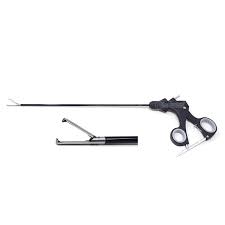Laparoscopic Trocars
Laparoscopic trocars are fundamental surgical devices used to create access points for instruments during minimally invasive procedures. These specialized tools enable surgeons to reach the abdominal or pelvic cavities without making large incisions, significantly reducing patient trauma and recovery time. Laparoscopic trocars are essential in procedures such as cholecystectomy, appendectomy, hernia repair, and gynecological surgeries.
Purpose and Function
Trocars serve as portals that allow laparoscopic instruments, cameras, and other tools to enter the body through small incisions. They are typically comprised of two main components:
-
Cannula (sleeve): The hollow tube that stays in place once inserted.
-
Obturator (sharp or blunt): Used to puncture the abdominal wall and then removed, leaving the cannula in place.
Some trocars are equipped with valves to prevent gas leakage during insufflation, which maintains the pneumoperitoneum (inflated abdomen) required for visibility and working space during laparoscopic surgery.
Types of Laparoscopic Trocars
Laparoscopic trocars come in various configurations based on the surgical need and surgeon preference:
-
Bladed Trocars: Equipped with sharp tips for easy entry but require careful handling to avoid internal injuries.
-
Bladeless Trocars: Feature conical or rounded tips that spread tissue instead of cutting, reducing the risk of vessel or organ damage.
-
Optical Trocars: Allow real-time visualization during insertion with an endoscope fitted inside, enhancing placement accuracy.
-
Dilating Trocars: Utilize a radial expansion technique to separate rather than cut tissue, minimizing trauma.
Key Features and Advantages
-
Minimally Invasive: Smaller incisions lead to less pain, faster recovery, and better cosmetic results.
-
Gas Seal Mechanism: Prevents loss of insufflation pressure and maintains stable working conditions.
-
Secure Locking System: Keeps the cannula firmly in place during instrument exchanges.
-
Multiple Sizes: Available in 5mm, 10mm, 12mm, and other diameters to accommodate various instruments.
Applications in Surgery
Laparoscopic trocars are indispensable in:
-
General Surgery (e.g., appendectomy, hernia repair)
-
Gynecological Procedures (e.g., hysterectomy)
-
Urology (e.g., nephrectomy)
-
Bariatric Surgery (e.g., gastric bypass)
They are commonly used in both diagnostic and therapeutic laparoscopy.
Conclusion
Laparoscopic trocars are a critical component of modern minimally invasive surgery. Their design continues to evolve for improved safety, ease of use, and surgical outcomes. Reliable, sterile, and ergonomically crafted, these instruments enhance the efficiency and precision of every laparoscopic procedure.








Reviews
There are no reviews yet.